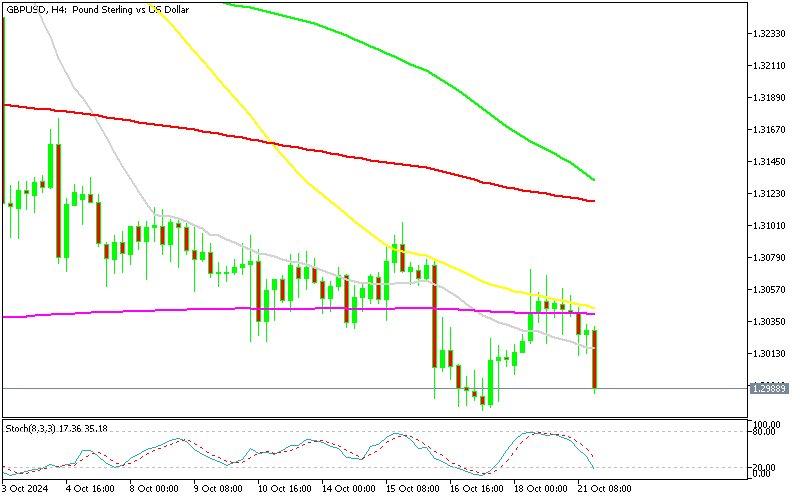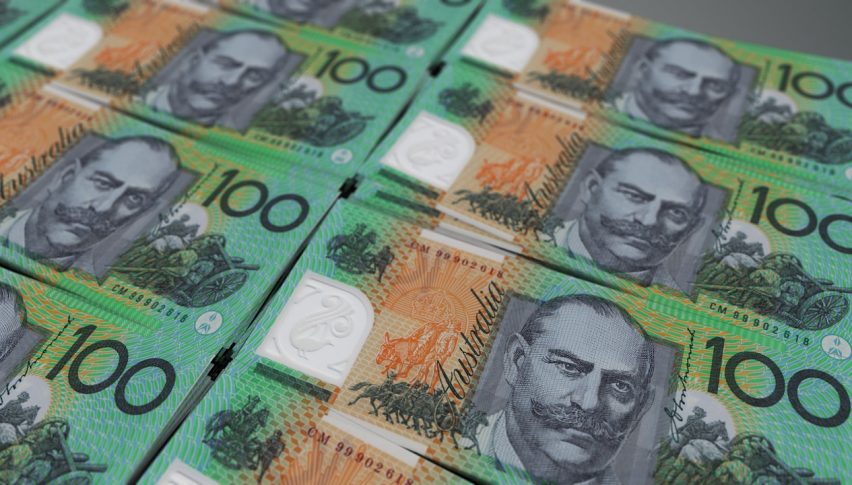GBPUSD Below 1.30 Again, As Risk Currencies Dwindle
GBPUSD bounced from below 1.30 late last week, however, the bounce was short-lived and now sellers have resumed control, sending it below 1.30 again. However, this is more of a broad USD move, which is making some decent gains across the board in the US trading session, climbing against safe havens as well as risk currencies.
GBP/USD Chart H4 – The Retrace Higher Seems Complete
After a sharp reversal above 1.34, the GBP/USD pair has dropped nearly 4 cents in October, breaking below the key 1.30 level last week following disappointing UK CPI inflation data for September. While the price has since risen above this level and pierced through moving averages on the H4 chart, the break hasn’t been decisive.
The 50 SMA (yellow) has continued to act as strong resistance, preventing buyers from maintaining their gains, leading the pair to fall back lower. After an 8-cent rally in August and September, this shift indicates a transition from a bullish to a bearish trend. Despite this, there are some positive signs in the UK economy.
The Pound Bounced After the Strong UK Employment Report
The UK employment report released last week showed stronger-than-expected job data for August and a slight drop in the unemployment rate from 4.1% to 4.0% in September. However, these improvements haven’t helped the GBP much, as it remains under pressure, falling below 1.30 and hitting last week’s lows. BOE external member Greene suggested in today’s FT column that rate cuts should be done gradually, echoing the sentiments of Fed’s Logan, though this has not provided immediate support for the pound.
She highlighted that the UK consumption is lagging behind other developed economies, with high savings rates and restrictive monetary policies playing a major role. Households are saving more due to the cost of living crisis and higher interest rates, which are delaying purchases and keeping discretionary spending below pre-pandemic levels. The full effect of rising interest rates, particularly on mortgages, is still to be felt.
Key Points from BOE External Member Greene (FT Column)
- UK Consumption Recovery Lags: The UK’s consumption recovery is slower compared to other developed economies.
- High Savings Rate: UK savings rate stands at 10%, significantly higher than the 5% seen in the US.
- Approach to Easing: A cautious and gradual approach to easing monetary policy is appropriate.
- Factors Dampening Consumption:
- Precautionary savings due to the cost of living crisis.
- Restrictive monetary policy limiting spending.
- Impact of interest rate changes on household incomes.
- Discretionary Spending Below Pre-Pandemic Levels: Spending on non-essential items has not returned to pre-COVID levels.
- Incentives to Save: Higher interest rates are encouraging saving, which in turn delays consumer purchases.
- Household Income from Savings: Households are earning more from interest on their savings accounts.
- Mortgage Impact Yet to Unfold: The full impact of higher interest rates on mortgages has not yet been realized.




